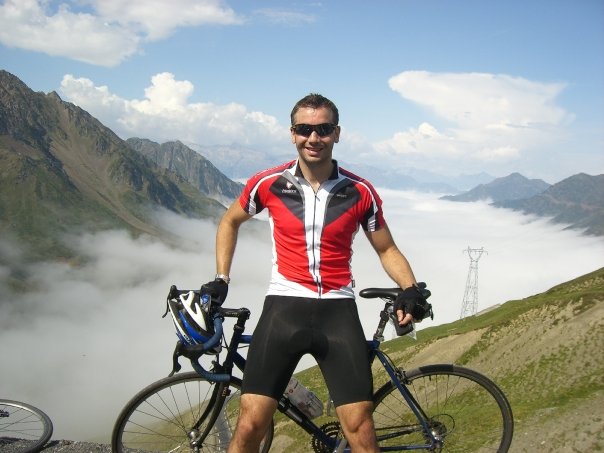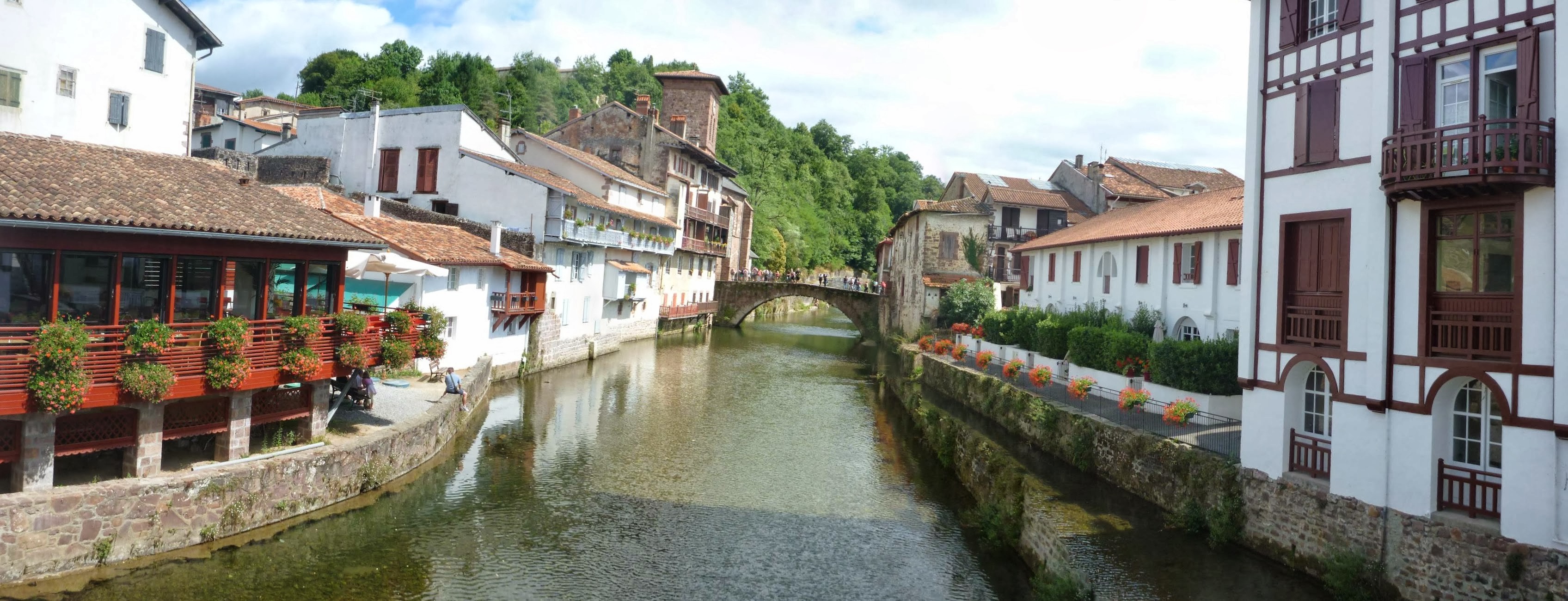- Contact usFR +33 450 872 109 US/CA +1 (646) 233-1354
- - Newsletter
- - Follow us





-

Home > Articles and tour tips > Pyrenees > Pyrenees Regional Information
04-03-2025
In this article, we cover the “basics” you need to know before traveling/cycling to the Pyrenees. Among other topics, you’ll learn about the various ways to travel to the Pyrenees, things to see and do, and more…
For general travel tips to France, we recommend you check:
How to get there: Air, train & bus service to the Pyrenees
Whether you arrive by air or by land, Biarritz where our tour in the Pyrenees starts, is easy to get to and is well serviced by train and by international airlines. We als sometimes offer tours starting in Pau, which is just as easy t access. To learn more about travel to/from Biarritz or Pau, do make sure to check the following articles:
If you wish to travel by train with your bike to Avignon, do read the following pieces:
When is the best time to travel to the Pyrenees?
The average population spans out to about 10 or fewer individuals per square kilometer, so it’s very unlikely you’ll be overwhelmed by the hustle and bustle of crowds. The suggested times of the year to visit the Pyrenees are during fall and spring months, as they offer amazing weather for outdoor activities. Summer weather is generally quite warm but thunderstorms are very typical so check the weather forecast! July and August are European summer holiday months, so expect an increase in the population (especially on the coasts) with all of the tourists during this time.
The Terrain
Visiting the Pyrenees provides for an interesting ride as the natural terrain is quite varied. That being said, our tour packages in this region are mainly geared towards the more serious cyclist. Clearly, the region is home to the Pyrenees mountain range which stretches across almost the entire region and separates France from Spain. The rugged mountain terrain takes up the majority of this region, so get ready to climb, climb, and climb some more. These mountains are unforgiving and definitely not for the faint-hearted. The mountains are around 3,000 meters (9,800 feet) at their highest which is comparable to many of the mountains in the Alps. The French side of the mountain range is admittedly more interesting with its luscious oak, chestnut, and beech forests. The Spanish side consists of a dry, rocky landscape for the most part. Hopefully you’re not scared of heights, because you’ll most likely need to cycle through the high-altitude passages to navigate this region. In the west, the hilly landscape is very fertile, as seen by the mountain pastures and deciduous forests. Eastern Pyrenees is also home to forests, but they’re specifically scrub and pinewood forests. Scattered along the region’s northern border are even more forests. While exploring the region you’ll also find many bodies of water, including waterfalls, lakes, gorges, hot and mineral springs, and streams. It's safe to say that the landscape is incredibly picturesque and perfect for nature enthusiasts!

What is there to do and see in the Pyrenees?
Home to three enormous national parks, the Pyrenees region is paradise for nature lovers and outdoors enthusiasts. Walking, skiing, canyoning, white-water kayaking, river rafting, snowshoeing, caving, paragliding, and generally most outdoor activities are readily available in this region. The area also provides an excellent option for a relaxing getaway due to its rural environment. Don’t be intimidated by the mountain terrain and rule out a good mountain hike either. You don’t need to be a professional to enjoy the mountains; those of average fitness can conquer large portions of a mountain or even reach the summit of a smaller mountain. If the mountains aren’t your cup of tea, head to the coast for a day in the sun at the beach. You can either go to the western coast to relax at a Basque country beach, or to the eastern Pyrenees coast to swim in the Mediterranean Sea. Furthermore, there is quite a lot of history in this part of Europe so be sure to check out the “Cathar” castles in the eastern Pyrenees, Roman bridges, Pyrenean Romanesque art, frescos, and even Pyrenean prehistoric cave paintings!

Pyrenees Weather and Climate
The weather tends to vary in this region from the mountains to the coasts. Below you’ll find the average monthly temperatures and rainfall for Perpignan (Mediterranean coast). Logically, you can expect colder temperatures in the mountains, so make sure to pack your cycling gear accordingly. Temperatures and rainfall levels for cities along the France’s Atlantic coast are similar to those of Perpignan’s.

Local Shopping/Products
If shopping is your main reason to travel, you’re going to the wrong area. One thing to keep in mind is a huge majority of shops, banks, museums and any kind of business close for at least two hours in the afternoon which is called, siesta. The larger cities in the region (Perpignan, Tarbes, and Bayonne) are likely to have most things if you forgot something at home and need to make a purchase, but overall, shopping’s not fantastic. Anyway, why spend your time indoors in a shop when you’re surrounded by all the beauties of nature? Take advantage of it and have fun!
Gastronomy and Wine: Food
Vegetarians beware- a majority of the food from this area is heavily focused on meat. In the mountains, game and cured ham is common, and along the coasts you’ll find amazing fish and seafood dishes. Seafood is caught daily and is of amazing quality! If you’re on the Spanish side of the Pyrenees, ordering a variety of tapas or the local fish stew will hardly ever leave you disappointed.
Gastronomy and Wine: Wine
White wine is not popular in Spain, so don’t expect to get a wide variety when on the Spanish side of the Pyrenees; Tinto (red) or rosado (rose) are the preferred choices. The Pyrenees area is not known particularly for its wine, although some decent options can be found. Some of these choices include Pacherenc, Madiran, Irouléguy, and Jurançon. Since it’s not the top region for wine production, local varieties tend to be quite affordable.
List of Markets
We’ve organized some notable markets by location, date, type and time (when applicable). If you happen to be in the area, stop by and check out the local offerings! You never know what you’ll find...
Elne
Monday, Wednesday & Friday: Town center.
Perpignan
Tuesday through Sunday: Place de la République.
Every morning, Marché de Cassanyes: Place Cassanyes
Prades
Tuesday & Saturday: Town center (Saturday market offers organic food)
Arles sur Tech
Friday: Town center
Céret
Saturday (food and crafts market): Boulevard Jean Jaurès
St-Laurent-de-Cerdans
Saturday (food, produce and general market): Place Gabriel Peri
Traveling tips for Castilla and Leon
Gravel Bikes: The Perfect Companion for Exploring Europe’s Most Scenic Bike Tours
Is an e-bike the right choice for me?
Alsace (7)
Andalusia (7)
Annecy (4)
Apulia (4)
Avignon (3)
Brittany (4)
Catalonia (6)
Corsica (3)
Cycling tips (20)
Dolomites (3)
Emilia-Romagna (2)
Events (8)
France (35)
French Alps (13)
General (72)
Getting there (17)
Girona (1)
Ile-de-France (3)
Italy (17)
La Rioja (3)
Languedoc (5)
Loire Valley (6)
Madrid (2)
Normandy (8)
Our Bikes (7)
Piedmont (4)
Portugal (3)
Provence (12)
Pyrenees (4)
Sicily (2)
Spain (18)
Switzerland (8)
Travel tips (26)
Tuscany (3)
Uncategorized (0)
Veneto (6)